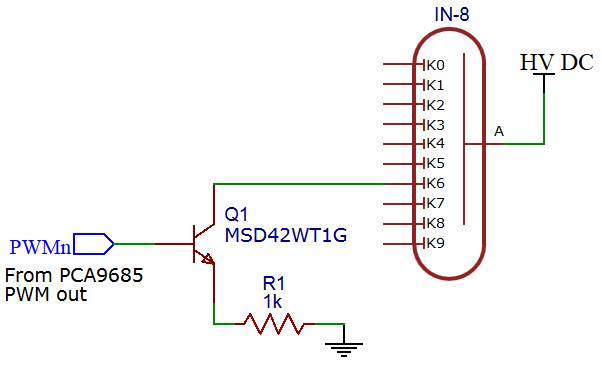I'm trying to replicate the Nixie clock designed by Kevin Lee (https://0x7d.com/2017/nixie-tube-clock/). It uses a NXP PCA9685 PWM controller and a MSD42WT1G BJT to drive each tube cathode separately.
The PWM signal is 5V and the voltage drop on the tube (when a cathode is conducting) should be around 133V. I don't know the "HV DC" anode voltage.
My questions are:
1) When PWM out is high, the BJT is in forward active or in saturation mode?
2) If it's in saturation (as I think), why R1 is placed between emitter and GND, and not between tube and collector?
3) Here the author says
For example, a 1K ohm resistor and Vb = 5V will result in Ve = ~4.4V and Ic = ~4.4mA regardless of Vc
but this should be possible only if in active mode, right? So the BJT is in active mode? If yes, why?
4) Assuming Vce negligible, the collector current is (HV DC - 133)/1000?
5) Is this the best way to arrange the circuit?
6) If the transistor is used only as high voltage switch, is it better a BJT or a MOSFET?
Thank you for your help!


